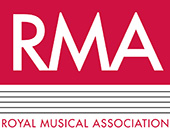On 15 and 16 June 2018, the Representations of Early Music on Stage and Screen (REMOSS) study group held their fourth annual conference at the University of Edinburgh. As in previous REMOSS events, the conference encompassed a wide range of subjects relating to how the past is evoked and reimagined on stage and screen, and it also sought to interrogate medievalism on a methodological and aesthetic level in the hope of opening up new research areas. The contributions were given by scholars at all stages of their careers, hailing from the UK, continental Europe and the USA.
Several papers explored medievalist video games and their soundscapes. Often, as Jennifer Smith demonstrated with relation to The Banner Saga (2014), the music’s effectiveness in this medium owes much to popular preconceptions of ancient worlds (as here, with the juxtaposition of horns and voices to represent a Nordic/Viking environment). Significantly, though, it is frequently the more prominent medievalist aspects of these scores that resonate the most with audiences, as Dan Donnelly highlighted in his examination of Nobuo Uematsu’s music for the Final Fantasy series. At other times, as Dean Chalmers reminded us, medievalist tropes are only one part of the picture: thus Shovel Knight (2015) is both medievalist and retro/1980s in conception, a fact underlined its chiptune audio and pixelated visuals.
The conference also provided a platform for nascent or hitherto neglected areas in musicological research. For example, Giovanna Carugno and Alex Robinson both explored the use of medieval-sounding music or genuine early music in various television programmes, respectively the Italian series Almanacco del giorno dopo for TG1 (1976-94) and David Starkey’s Monarchy for Channel Four (2004-6). Likewise, certain papers concentrated on stage productions and the way in which their music evokes a sense of historical sound, notably Adam Whittaker (who discussed Messiaen’s Saint François D’Assise of 1983), and Ralph Corrigan (who analysed Damon Albarn’s Opera Dr Dee from 2012-13).
The question as to how medievalism should be defined surfaced time and again throughout the conference. This was exemplified by James Cook’s discussion of the audio-visual shows hosted by Carrières de Lumières, with their disparate soundscape comprising works by Mussorgsky, Led Zeppelin, Orff and Max Richter. Similarly, Alessandro Restelli reminded us that even musical instruments, as silent objects, can project ideals of medievalism; other speakers explored this theme by charting the popularity and performances of specific musical works (as Jacob Sagrans did in his engaging discussion of the carol Gaudete). The conferences’ multifarious threads were further enhanced by Kenny McAlpine’s keynote lecture, which reminded us that the boundaries between reality and remoteness are often greater than we wish to acknowledge: indeed, a digital, playable model of an acoustic instrument only seems problematic to many people because of the human qualities which are involuntarily imposed onto such objects.
Alex Robinson
